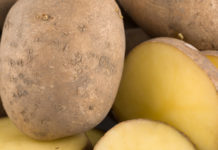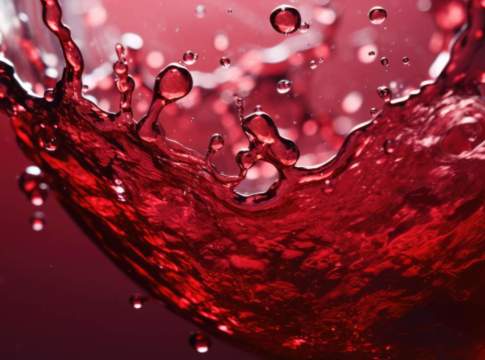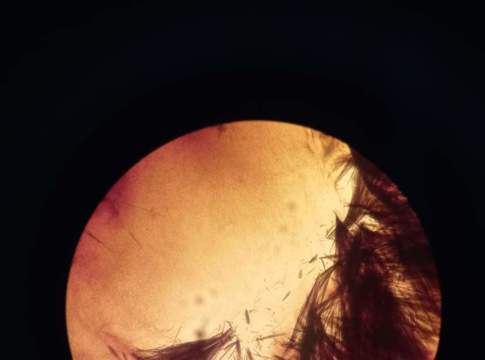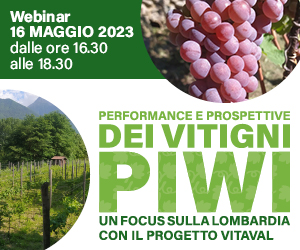
L’aspetto limpido e l’assenza di torbidità sono tra gli attributi più importanti nella valutazione della qualità di un vino bianco. Un’adeguata manipolazione e decantazione dei mosti nelle fasi pre-fermentative della vinificazione in bianco possono limitare e/o evitare l’insorgenza dei fattori che contribuiscono all’imbrunimento e alla torbidità del futuro vino, limitando l’ossidazione ed allontanando materiale torbido come pectine, gomme e proteine dai mosti. Dopo la pigiatura delle uve...
L'ARTICOLO COMPLETO A FIRMA DI ALESSANDRA RINALDI ET AL. E' PUBBLICATO A PAGINA 50 DEL FASCICOLO 6/2016 DI VQ. PER ACCEDERE ALLA RIVISTA ONLINE E' NECESSARIO ESSERE ABBONATI.
VAI ALLA PAGINA DEGLI ABBONAMENTI
PER APPROFONDIRE (Approfondimenti a cura degli Autori)
Tabelle-approfondimento-acidi-idrossicinnamici
Bibliografia
Adams, D. O. (2006). Phenolics and ripening in grape berries. American Journal of Enology and Viticulture, 57(3), 249–256. Amati, A., Galassi, S., & Spinabelli, U. (1979). Sull’impiego del caseinato potassico nella stabilizzazione dei vini bianchi. Vignevini, 3, 27–33. Asero, R., Antonicelli, L., Arena, A., Bommarito, L., Caruso, B., Colombo, G., et al. (2009). Causes of food-induced anaphylaxis in Italian adults: A multi-centre study. International Archives of Allergy and Immunology, 150(3), 271–277. Barroso, C. G., Sánchez, L. L., Otero, J. C., Cela, R., & Pérez-Bustamante, J. A. (1989). Studies on the browning of fino sherry and its relation to polyphenolic compounds. Zeitschrift für Lebensmittel-Untersuchung und Forschung, 189(4), 322–325. Caillet, M. M. (1994). Stabilisation et clarification des vins per le collage. Revue des Oenologues, 74, 15–18. Cheynier, V. F., Trousdale, E. K., Singleton, V. L., Salgues, M. J., & Wylde, R. (1986). Characterization of 2-S-glutathionyl caftaric acid and its hydrolysis in relation to grape wines. Journal of Agricultural and Food Chemistry, 34(2), 217–221. Cheynier, V., Basire, N., & Rigaud, J. (1989). Mechanism of trans-caffeoyltartaric acid and catechin oxidation in model solutions containing grape polyphenoloxidase. Journal of Agricultural and Food Chemistry, 37(4), 1069–1071. Cheynier, V., Rigaud, J., Souquet, J. M., Duprat, F., & Moutounet, M. (1990). Must browning in relation to the behavior of phenolic compounds during oxidation. American Journal of Enology and Viticulture, 41(4), 346–349. Cheynier, V., Souquet, J. M., & Moutounet, M. (1989). Glutathione content and glutathione to hydroxycinnamic acid ratio in Vitis vinifera grapes and musts. American Journal of Enology and Viticulture, 40(4), 320–324. Cosme, F., Capão, I., Filipe-Ribeiro, L., Bennett, R. N., & Mendes-Faia, A. (2012). Evaluating potential alternatives to potassium caseinate for white wine fining: Effects on physicochemical and sensory characteristics. LWT – Food Science and Technology, 46(2), 382–387. Creusot, N., Wierenga, P. A., Laus, M. C., Giuseppin, M. L., & Gruppen, H. (2011). Rheological properties of patatin gels compared with β-lactoglobulin, ovalbumin, and glycinin. Journal of the Science of Food and Agriculture, 91(2), 253–261. Gambuti, A., Rinaldi, A., & Moio, L. (2012). Use of patatin, a protein extracted from potato, as alternative to animal proteins in fining of red wine. European Food Research and Technology, 235(4), 753–765. Laurière, M., Pecquet, C., Bouchez-Mahiout, I., Snégaroff, J., Bayrou, O., Raison-Peyron, N., et al. (2006). Hydrolysed wheat proteins present in cosmetics can induce immediate hypersensitivities. Contact Dermatitis, 54(5), 283–289. Li, H., Guo, A., & Wang, H. (2008). Mechanisms of oxidative browning of wine. Food Chemistry, 108, 1–13. Liu, J. W. R., Gallander, J. F., & Wilker, K. L. (1987). Effect of juice clarification on the composition and quality of eastern US table wines. American Journal of Enology and Viticulture, 38(2), 147–150. Manfredini, M. (1989a). Coadiuvanti enologici: Bentonite. Vignevini, 4, 43–46. Manfredini, M. (1989b). Coadiuvanti enologici: Caseina/caseinato di potassio. Vignevini, 3, 47–50. Marchal, R., Marchal-Delahaut, L., Michels, F., Parmentier, M., Lallement, A., & Jeandet, P. (2002). Use of wheat gluten as clarifying agent of musts and white wines. American Journal of Enology and Viticulture, 53(4), 308–314. Mayén, M., Barón, R., Mérida, J., & Medina, M. (1997). Changes in phenolic compounds during accelerated browning in white wines from cv. Pedro Ximenez and cv. Baladi grapes. Food Chemistry, 58(1), 89–95. Minussi, R. C., Rossi, M., Bologna, L., Cordi, L., Rotilio, D., Pastore, G. M., et al. (2003).Phenolic compounds and total antioxidant potential of commercial wines. Food Chemistry, 82(3), 409–416. Moio, L. (2012). Colori, odori ed enologia del Fiano. Sperimentazione e ricerca enologica in Campania. Napoli: Assessorato Agricoltura, Regione Campania. Moio, L., Ugliano, M., Gambuti, A., Genovese, A., & Piombino, P. (2004). Influence of different clarification treatments on the concentration of selected free varietal aroma compounds and glycoconjugates of Falanghina (Vitis vinifera L.) must and wine. American Journal of Enology and Viticulture, 55(1), 7–12. Pecquet, C., Bayrou, O., Vigan, M., Raison, N., & Laurière, M. (2004). Hydrolysed wheat protein: A new allergen in cosmetics and food. Contact Dermatitis, 50, 182–183. Pots, A. M., de Jongh, H. H., Gruppen, H., Hessing, M., & Voragen, A. G. (1998). The pHdependence of the structural stability of patatin. Journal of Agricultural and Food Chemistry, 46(7), 2546–2553. Rigaud, J., Cheynier, V., Souquet, J. M., & Moutounet, M. (1991). Influence of must composition on phenolic oxidation kinetics. Journal of the Science of Food and Agriculture, 57(1), 55–63. Robards, K., Prenzler, P. D., Tucker, G., Swatsitang, P., & Glover, W. (1999). Phenolic compounds and their role in oxidative processes in fruits. Food Chemistry, 66(4), 401–436. Rodríguez Montealegre, R., Romero Peces, R., Chacón Vozmediano, J. L., Martínez Gascueña, J., & García Romero, E. (2006). Phenolic compounds in skins and seeds of ten grape Vitis vinifera varieties grown in a warm climate. Journal of Food Composition and Analysis, 19, 687–693. Siebert, K. J., & Lynn, P. Y. (1997). Mechanisms of adsorbent action in beverage stabilization. Journal of Agricultural and Food Chemistry, 45(11), 4275–4280. Siebert, K. J., Troukhanova, N. V., & Lynn, P. Y. (1996). Nature of polyphenol–protein interactions. Journal of Agricultural and Food Chemistry, 44(1), 80–85. Sims, C. A., Eastridge, J. S., & Bates, R. P. (1995). Changes in phenols, color, and sensory characteristics of muscadine wines by pre-and post-fermentation additions of PVPP, casein, and gelatin. American Journal of Enology and Viticulture, 46(2), 155–158. Singleton, V. L., Salgues, M., Zaya, J., & Trousdale, E. (1985). Caftaric acid disappearance and conversion to products of enzymic oxidation in grape must and wine. American Journal of Enology and Viticulture, 36(1), 50–56. Singleton, V. L., Sieberhagen, H. A., de Wet, P., & van Wyk, C. J. (1975). Composition and sensory qualities of wines prepared from white grapes by fermentation with and without grape solids. American Journal of Enology and Viticulture, 26, 62–69. Singleton, V. L., Zaya, J., & Trousdale, E. K. (1986). Caftaric and coutaric acids in fruit of Vitis. Phytochemistry, 25(9), 2127–2133. Spagna, G., Barbagallo, R. N., & Pifferi, P. G. (2000). Fining treatments of white wines by means of polymeric adjuvants for their stabilization against browning. Journal of Agricultural and Food Chemistry, 48(10), 4619–4627. Spanos, G. A., & Wrolstad, R. E. (1990). Influence of processing and storage on the phenolic composition of Thompson seedless grape juice. Journal of Agricultural and Food Chemistry, 38(7), 1565–1571. Watanabe, M., Suzuki, Y., Sasaki, K., Nakashimada, Y., & Nishio, N. (1999). Flocculating property of extracellular polymeric substance derived from a marine photosynthetic bacterium, Rhodovulum sp. Journal of Bioscience and Bioengineering, 87(5), 625–629. Yokoi, H., Natsuda, O., Hirose, J., Hayashi, S., & Takasaki, Y. (1995). Characteristics of a biopolymer flocculant produced by Bacillus sp. PY-90. Journal of Fermentation and Bioengineering, 79(4), 378–380.










